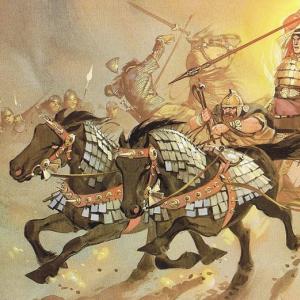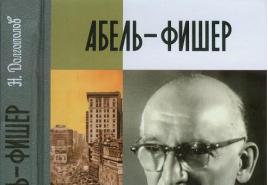Nature is an amazing surrounding world. Why and how are stones destroyed? The absurdity in the scientific approach IX
Nature is an amazing, mysterious external world that obeys laws that have been formed over many millions of years. The definition of the word "nature" is interpreted by scientists in different ways, but its essence is primary. Nature was not created by man, and it should be taken for granted. In short, nature is an amazing and multifaceted surrounding world.
How do stones break down and why does it happen? The answers to these questions can be found by reading this article.
general information
Most of the changes in the surrounding landscape are not immediately noticeable. The destruction process in natural conditions is very slow, but it certainly exists. What does not happen in nature! The processes are the most amazing and diverse, some of which are inexplicable.
In nature, over time, literally everything is destroyed, including stones, which, it would seem, are such strongholds. As a result, everything turns into a perfect other state and into other forms.
About stones
Before an answer is given to the question of why stones collapse, you should know what a stone is and what properties it has.
Stones are solid bodies. They are scattered everywhere, they can be seen everywhere. Moreover, there are stones, small and large, of regular shape and indefinite, smooth and with a rough surface. They cover almost all of them, including the underwater part.

Environmental impact on stones
- On sunny warm days, the stones heat up, and at night they cool down. Accordingly, they periodically expand and contract. Moreover, in some places the heating is strong, in others it is weaker. It turns out that both expansion and contraction are uneven. For these reasons, cracks appear in the stones, where water enters, which freezes in frost and expands even more. The ice presses against the walls of the cracks with tremendous force, and the stones break into smaller pieces, in which the same process is repeated. Under the influence of this factor, stone destruction most often occurs.
- How are stones destroyed by the wind? The wind, especially strong, is capable of blowing small particles from the surface of hard stones. During strong storms, the wind carries with it a huge number of small particles of sand, which, hitting the stones, process their surface like sandpaper. Also, plant seeds can get into the cracks, which eventually grow directly into them. The growing roots further widen existing cracks and break stones. After many hundreds and thousands of years, deposits of smaller stones appear at the very foot of the huge rocks. All this is the result of wind erosion. The impact of wind is the weakest factor affecting the destruction of the stone.
- How are stones destroyed by water? After rains and melting snow, and in rivers and streams, streams of water pick up stones and roll them, transferring them to different distances. The stones are ground between themselves and on the ground and crushed. They can gradually turn into clay and sand.

Other processes affecting the destruction of stones
How are stones destroyed by other natural phenomena? Chemical weathering also exists in nature - reactions that occur between chemical elements that can damage stones. The main force is water and oxygen, formed by the interaction of alkali and acid.
There is also biological weathering. It is due to the action of animals and plants. They either by personal participation (for example, they eat a sprout that breaks through a stone), or due to the participation of their metabolic products (chemical active substances are added, and their subsequent action falls under another definition - chemical weathering) affect the rate of destruction of stones.

Conclusion
How do stones break down? All this happens due to the action of water, sun, wind, temperature changes, plants and other biological and chemical substances.
Absolutely everything in nature is affected by the above phenomena. Mountains, rocks, cliffs, boulders, stones and even sands change shape and size over time. But the most destructive in nature is still time. It alone has power over all this, and the forces of nature are only an instrument. Of course, human economic activity cannot be ruled out, which is the main artificial cause of the destruction of rocks, including stones.
The purpose of the lesson: To acquaint students with the causes of the destruction of stones.
Equipment: two dynamic schemes from colored cardboard for playing meteorologists: clouds, rain, 2 suns, arrows, cards with numbers; fragments of stones in a box; disk with the melody "Weather Forecast" (intro from the "Time" program: Frank Pursel, "Manchester - Liverpool"); master's hat; mantle.
Registration:writing fragments of poems about autumn on the blackboard.
During the classes
I. Organizing time.
Teacher: Guys, we will start today's lesson with a weather forecast, see what messages you have prepared at home, and then move on to studying a new topic. But I won't tell you the name of the topic right away, you will help me formulate it.
II. Observing the weather.
The game of weather forecasters
Music "Weather Forecast" sounds. Two students come out to the blackboard, make up a diagram of the weather for a given day from prepared cards: a cloud, raindrops, part of the sun, an approximate temperature, an arrow indicating the direction of the wind. Take turns commenting on their schemes.
Teacher: Guys, what scheme, in your opinion, is more accurate?
Which of the poems most accurately reflects the state of today's weather? Why?
Boring picture!
Endless clouds
The rain is pouring down
Puddles by the porch ... (A. Pleshcheev)
Is in the autumn of the initial
A short but wondrous time -
The whole day is like crystal,
And the evenings are radiant ...
The air is empty, you can't hear the birds anymore,
But far from the first winter storms
And clear and warm azure pours
To the resting field ... (F. Tyutchev)
III. Homework check.
Teacher: What was asked at home? (Draw a poster "Save water!")
So, imagine that you and your work were invited to a very important congress of ecologists. And now your task is to use posters to tell everyone why it is so important to protect water from pollution and how to do it.
So we are listeners and spectators. And the floor is given ... (the teacher invites the student to the blackboard).
Children who go to the board put on a robe and a master's cap.
Which message impressed you the most? Why?
IV. Preparation for learning new material. Formulation of the topic and goals.
Teacher: Now you have to determine the topic of our lesson. First, I ask you to listen carefully to a short fragment of the story of Arkady Gaidar. I will read the text and replace the main word with the word SUBJECT. Your task is to guess what the subject is about.
Fragment of the story of Arkady Gaidar "Hot Stone":
Ashamed of Igor Ivashka wandered into the forest, got lost and fell into a swamp. Finally he was tired. He lowered himself onto a blue OBJECT sticking out of the moss, but immediately jumped up with a cry, as it seemed to him that he sat on a forest bee and she stung him painfully through the hole of his pants.
However, there was no bee TO DO. This OBJECT was like coal, hot, and letters covered with clay appeared on its flat surface.
It is clear that the SUBJECT was magical! - Ivashka realized this at once. He threw off his shoe and hastily began to hammer with his heel with the inscription on the clay, so as to quickly find out: that from this OBJECT he can take advantage and sense for himself.
And so he read the following inscription:
WHO TAKES OFF THIS THING ON MOUNTAINAND THERE WILL CREATE IT INTO PARTS, THAT WILL RETURN ITS YOUTH AND START LIVING FROM THE FIRST.
Teacher: So what is the story about? (About the stone). Has anyone read this story? (Student responses). This work is called "Hot Stone". The author is Arkady Gaidar.
What Ivashka did, you can find out by reading this story, if you are not yet familiar with it. And I also found this magic stone and guess what I brought you.
The teacher shakes the closed box with stones. The disciples answer that these are stones.
Teacher: Yes, I brought you magic stones, they will not make you younger, but they will definitely bring good luck today. (The teacher distributes stones to the children.)
Feel them, examine them. Describe the properties and appearance.
Now try to define the topic of our lesson.
Students' answers.
Communication of the topic and purpose of the lesson.
Teacher: So, the topic of our lesson: How do stones break down?
What goal will we set for ourselves?
Students' answers.
V. Working with new material.
Teacher: Guys, take another look at the fragments of the stone that I gave you. How do you think I managed to split the stone? But can a stone be destroyed under the influence of natural phenomena, i.e. without human intervention?
Students' answers.
Teacher: Now I will show you the experience. Look carefully.
Demonstration of experience from the textbook: two nails are driven into the board, the teacher inserts a coin between the nails. Shows that the coin easily passes between these nails. Heats up the coin: the coin does not fit into the gap between the nails.
Teacher: What conclusion can be drawn from this experience?
pupils: When heated, solids expand, when cooled, they contract.
Teacher: What does this experience have to do with our lesson?
Students' answers.
Teacher: More details about how the destruction of stones occurs, we will learn with you from the textbook.
Working with the tutorial.
Reading the text (p. 63) chain.
Vi. Consolidation of the learned.
Questions from the tutorial:
1. What happens to solids when heated and cooled?
2. Why do rocks form cracks due to temperature changes?
3. What role does water play in breaking rocks?
4. What role does wind play in breaking rocks?
5. Why can plants accelerate the destruction of stones?
Physical education.
Teacher:I suggest that you return to a fragment of the story "Hot Stone".
Now I will re-read a few lines again, and you try to depict with actions what you hear.
"... From shame and grief Ivashka wandered into the forest ...".
“… Finally he was tired. He sank onto a blue stone sticking out of the moss, but immediately jumped up with a cry ... "
Repeat actions 3 times.
Teacher: Well done, you were good artists.
Messages about stones.
Teacher: Stones are different. What stones do you know?
Students' answers.
Teacher: Your classmates have prepared small messages about precious and semi-precious stones.
1st student:AQUAMARINE (from the Greek "aqua" - water, "mare" - sea. According to legend, due to its mystical relationship with sea water (and in fact - color similarity), aquamarine amulets protected sailors in sailing. The weight of one of the largest crystals of aquamarine reaches more than 110 kg.
2nd student:DIAMOND (from the Greek "adamas" - irresistible, unsurpassed). Has the highest hardness compared to other natural stones. The largest diamonds have a name. The richest deposits are in Africa. In our country, Yakutia is famous for them.
3rd student:GIPS (Greek "gypsum" - chalk, lime). Since ancient times, gypsum has been used as an ornamental and decorative stone. Openwork vases, stands, lamps, figurines, ashtrays are cut out of it.
Gypsum is used as cement and modeling material, in medicine, as fertilizer. Deposits with decorative varieties are located in the Arkhangelsk region, the Kama region, in the North Caucasus and the Urals.
4th student:PEARL. In order to find a pearl, you have to examine the shells of many mollusks, while destroying their inhabitants; A lot of waste is obtained, and considerable damage is caused to nature.
5th student: RUBY (from the Latin "ruber" - red) - a precious stone. Rubies were valued above the equal size of emeralds and diamonds. It was these stones that were first called oriental. This meant: magnificent, the best found in other parts of the earth, which absorbed all the beauty and brightness of the legendary East.
6th student:ROCK CRYSTAL - colorless and absolutely transparent crystals."Crystal" is the Russian form of the Greek word "crystallos" - ice. A rock crystal crystal with a two-storey house was found in Kazakhstan, its weight is 70 tons.The glass warms up quickly, while the rhinestone remains cold. In ancient Rome, wealthy patricians used large crystal balls to cool their hands in the heat. Is this self-deception or the wonderful quality of the stone?
Scientists have found the answer. It turned out that rock crystal, unlike glass, easily conducts heat. It seems to “take away” heat from the body, “absorb” it with its entire mass. And the glass heats up quickly from the surface, although the inside may remain cold.
Vii. Lesson summary.
Test work.
There are two possible correct answers.
1. Stones are:
a) man-made artificial objects;
b) solids;
c) a layer of earth.
2. Which statement is correct?
a) The destruction of hard rocks is caused by: changes in temperature, the action of water, wind, plants.
b) The destruction of hard rocks is caused by: temperature changes, the action of water, wind
c) Hard rocks are not subject to destruction.
3. Due to temperature changes, cracks are formed in stones, because:
a) stones tend to melt;
b) the stones expand;
c) uneven expansion and contraction of stones occurs.
4. Wind destroys rocks because:
a) he cools them;
b) brings plant seeds into cracks;
c) blows out grains of sand from the surface of the rocks.
5. Water can destroy stones because:
a) streams of water grind stones against each other and grind them;
b) in winter, getting into cracks, it freezes and expands;
c) contains pollutants.
Analysis of test works.
VIII. Homework.
Prepare a message of your choice:
a) about any stone;
b) about the mountain or mountains of Russia.
References:
1. Balandin R.K. Encyclopedia of Gems and Minerals. M .: Veche. 2000 year
2. Gaidar A. Collected Works in Three Volumes. Volume 2. Moscow: Pravda Publishing House, 1986
3. A.A. Pleshakov The world around us, grade 3. M .: Education. JSC "Moscow textbooks", 2011
Elvira Yafarova, teacher of the cadet school No. 1785, Moscow
Sections: elementary School
Class: 3
Lesson objectives:
- To acquaint children with new material: "What is soil".
- To acquaint with the concepts: soil, humus, fertility.
- Reveal the basic properties of the soil, soil composition.
- In the process of experiments and practical exercises, develop thinking, observation, curiosity of children.
- Learn about the prevailing soils of the native land.
- To cultivate a respect for the soil and a sense of protecting the soil from destruction.
Equipment:
- model of soil outcrop; collection of local soils;
- drawing "Soil outcrop";
- sand, clay, soil;
- picture of soil types (podzolic, black earth, peat);
- for the experiment: soil, calcined soil, glass rods, test tubes, spirit lamp, tin can, tripod with mesh.
During the classes
I. Organizational moment
II. Homework survey. Test on the topic "How stones break down"
Test "How stones break down"
What happens to water when it turns into ice?
a) Water, turning into ice, expands;
b) Water, turning into ice, is compressed;
c) Nothing happens to water when it turns into ice.
What happens to stones when heated?
a) Stones expand when heated;
b) Stones shrink when heated;
c) Nothing happens to stones when heated.
How do cracks form in rocks and stones?
a) By heating rocks, stones on warm sunny days;
b) Due to the cooling of rocks, stones at night;
c) Due to uneven expansion and compression of rocks, stones.
What representatives of wildlife accelerate the destruction of rocks?
a) Animals;
b) Plants;
c) Fungi and microbes
What is formed when rocks and stones are destroyed?
a) Sand and clay
b) Marble and granite;
c) Water and gas.
III. Introduction to the topic
a) The lesson begins by reading the article "The Wonderful Pantry".
Wonderful pantry
There is a wonderful pantry in the world. You put a bag of grain in it, and in the fall you look: instead of one, there are already twenty in the pantry. A bucket of potatoes in a wonderful pantry turns into twenty buckets. A handful of seeds is made with a large pile of cucumbers, radishes, tomatoes, carrots.
Have you ever seen a seed with two wings? You blow on it - and it flew. And if such a seed falls into a wonderful pantry, it will lie down - you see, where there was a winged seed, there is a branchy tree, but so big that you cannot grasp it.
This is not a fairy tale. There really is a wonderful pantry. You must have already guessed what it is called. (M. Ilyin)
What miracle happens in the pantry?
b) The topic of the lesson is determined; setting lesson objectives.
Solve the crossword puzzle and you will find out the name of the pantry. (The soil)
1. A free-flowing substance that is obtained as a result of the destruction and crushing of stones. (Sand)
2. The part of a plant that is deep in the ground. (Root)
3. Formation on a branch from which a leaf or flower emerges. (Bud)
4. A substance that is necessary for each plant. (Water)
5. An animal that has eight legs. (Spider)
What's the name of the pantry? (The soil)
Have you ever seen the slope of a large cliff? The wall of the big pit? Where? What does a cliff consist of? (From clay, sand, stones)
What color is usually the top layer of the earth? (Dark)
c) Examination of the soil (Remains of roots, stems of plants, remnants of leaves, parts of insects, etc.)
This is the soil. So, the upper, dark, loose, layer of earth, where plants grow and can grow, is soil.
On the desk: Soil is the upper, dark layer of the earth.
Guys, try to name the main property of the soil.
The main feature of the soil is its fertility.
Why is the soil fertile? What does it consist of and what does it contain? Experiments will help us to answer these questions:
IV. Observation of experiments. Soil composition.
Throw a lump of soil into a glass of water. (Air bubbles come out of it) - there is air in the soil.
Heating the soil on a metal lid while holding glass over it - the glass “fogs up” - there is water in the soil.
Further heating of the soil - the appearance of haze and a pungent odor - the remains of plants and animals burn.
Stirring highly calcined soil in water and observing sediment - first sand settles, then clay - there is sand and clay in the soil.
Filtration of water through sand, clay - the soil passes water better, clay, but worse than sand.
How else is soil different from sand and clay?
Color composition, ability to pass water, and what else?
Who guessed?
Do plants grow well on sand, clay and rocks?
All plants grow on the soil much better than on clay and sand, stones, that is, the soil is fertile - or the soil has fertility, the property of which sand, clay, stones do not have.
Outcome
The soil is the upper loose layer of dark earth.
The soil consists of sand, clay, pebbles, plant and animal remains.
There is water and air in the soil.
The soil allows water to pass through better than clay, but worse than sand.
The main property of the soil is its fertility.
V. Teacher's story
Why is the soil dark? What does its color depend on?
We found the remains of plants and animals in the soil. They rot, and when they rot, humus is formed in the soil - a product of their rotting. It is humus that gives the soil a dark color, the more humus, the thicker and darker the soil layer.
When rotting, humus turns into mineral salts, which are very necessary for the plant. Water, getting into the soil, dissolves mineral salts, and the roots with water absorb them into plants and supply them with water to the leaves. In the leaves in the light in the warm season, a living substance is formed and in the form of juice through the bark it enters the branches, trunk, roots - from this plant grow. Mineral salts are plant food.
When plants die, they rot, forming humus, and humus turns back into mineral salts.
The circulation of substances in nature is improving (from inanimate to living and vice versa).
Outcome
Remnants of dead plants and animals form humus. Humus gives the soil a dark color. Humus forms mineral salts - plant food.
Additional material
Soil in nature is formed very slowly: over 100 years - 1 cm.
Vi. Physical education
Vii. Soil types
Guys, the soils of our country are diverse.
Demonstration:
* Chernozem soil.
* Podzolic soil.
* Peat soils.
a) - What do you think is the most fertile of these soils? (black earth)
How did you guess? (By the thickness and color of the soil - by the amount of humus in it)
In Russia, there are many chernozem soils and the most powerful chernozems reach 2 meters, and 200 years ago near Voronezh they found black soil up to 6 m thick.
During the Great Patriotic War of 1941-1945, the Nazis exported Russian black soil to Germany.
b) - Podzolic soils are located in the zone of forests - especially conifers. Look at the color of these soils in the picture and try to guess why it is called that (for the color similar to ash)
Podzolic soil is not very fertile, since there is a little humus in it, but if manure is added to it, it will give a good harvest - manure, rotting, increases the amount of humus in the soil.
Peat soils are brown in color, but they have a lot of water and because of this, plant remains do not rot well. To improve the fertility of peat soils, they are drained and mineral fertilizers are applied.
Outcome
Soils are black earth, podzolic, peat - bog. The richest soils are black earth, they contain a lot of humus.
c) Work on the soil map of Tatarstan.
VIII. The benefits of soil for humans
What role does soil play in our lives?
We grow on soil grain crops (bread, cereals, flour) + vegetables + fruits + industrial crops: flax, cotton, mustard, sunflower, beet; in this - fabrics, butter, sugar, flowers - honey.
The soil grows feed for animals: grass, hay, silage, grain. And animals give you milk, meat, oil, wool, animal skin - for shoes and clothes.
Medicinal plants grow on the soil, from which medicines are made.
Trees grow on the soil, from which we make furniture, houses, building materials, paper, flowers - decorating our land, life.
Outcome
The soil is our main wealth, it gives us all food, clothing, medicine, building materials.
Life will perish without soil.
IX. Protection of soil from destruction
a) Working with the textbook from 68
Fighting ravines.
Fight against soil destruction by wind.
The soil is badly destroyed by water, wind and improper processing. To protect the soil, it is necessary to fight ravines, protect the soil from the wind with forest belts, properly cultivate the soil and apply fertilizers to it.
The best fertilizer is manure.
Worms are useful animals, they improve the soil.
To restore the destruction of the soil is very difficult, and sometimes impossible.
X. Securing the material (according to the table)
XI. Homework
P. 65-70 retelling, answer questions.
It is enough to delve into the essence of scientific definitions or ask obvious questions from scientists in order to understand how imaginary and contradictory is today's scientific picture of the world ...
Why did I decide to write this article? And is there any relevance in this? - Yes there is. And it consists primarily in the fact that the identification and even a simple ordinary attention to the contradictions in the scientific picture of the world is important in itself. This is necessary, first of all, in order to follow the correct path of knowledge.
Correct ideas about the nature of things and phenomena - make it possible to manage them. Wrong ideas about nature will inevitably lead to an ecological disaster (in which we are now). And the constant further ignoring of the obvious mistakes of science - and to the death of civilization itself.
One of the main "stumbling blocks" that pulls science and knowledge into the abyss is the existing principle of knowledge itself. Let's take a little more detail.
1) Excessive postulation. As science develops, postulates are introduced (concepts accepted without proof). Naturally, a person previously could not explain this or that natural phenomenon - for this he introduced one postulate, then another, in order to rise to the level of understanding higher and from a new, from a higher point of view, already close the old postulates. Accordingly, as science develops, the number of postulates should decrease. But at the moment there are hundreds of them, and this number is not even decreasing, but on the contrary growing - which, in itself, should already alert. As a result, we have a lot of open white spots in the foundation itself.
2) The next wrong approach of cognition itself is the absolutization of our senses. The organs of perception that a person uses in his knowledge of nature do not give him such an opportunity for one simple reason. Nature has created the human senses not so that he can cognize it. The sense organs of man, and indeed, of all animals, arose and developed as a mechanism for adaptation and adaptation of each type of living creature to the ecological niches that they occupy (and which consist of physically dense matter. And everything else is 90% of the matter in the Universe - " dark matter "(" dark matter "). AND ONLY 10% of all matter - physically dense, in principle, is the tip of the iceberg ...)
The senses fix only what they are adapted to. And they give an idea of \u200b\u200bthe four states of aggregation of physically dense matter - solid, liquid, gaseous and plasma, as well as the optical range of longitudinal-transverse waves and the acoustic range of longitudinal waves.
Eyes react only to the optical range of electromagnetic radiation [(4 ... 10) 10-8 m]. Which is LESS than 1% of all types of electromagnetic waves that are currently known to science!
Therefore, having only five senses, even expanded with the help of devices, it is simply impossible to describe and create a complete picture of the universe. In order to create a complete picture, it is necessary to be able to simultaneously observe both the surface and the underwater parts of the "iceberg" of the universe, which is possible only with the appearance of additional senses to the five existing ones.
3) The next problem is the use of mathematics - abstract science to explain natural phenomena. After all, you can't just take a natural phenomenon, multiply it by another natural phenomenon, and get a pattern and a formula. Understanding of the universe should be based on a philosophical rethinking, not an abstract, numerical science.
We were always told that, for example, biology stands on chemistry, chemistry stands on physics, but physics stands on mathematics. But when you think about such a strange hierarchy and analyze physical formulas, the question involuntarily arises: what is the relation of numbers and abstract laws of mathematics to real phenomena of nature, in which the function of mathematics lies only in quantitative calculations? And then, we must take into account that behind the numbers there are real objects - and not just numbers. Let's take, for example, the number of apples as a calculation. There were 6 in total, divided equally into 3 people - therefore, everyone will get 2 apples. No one will doubt that mathematically it will look like this: 6: 3 \u003d 2 or 6 - 2 - 2 - 2 \u003d 0. But one must understand that apples differ in weight, taste, quality ... This is discarded. Or, if we add a banana and an apple, mathematically, there will only be a calculation of the category of the fruits themselves and will be written as 1 + 1 \u003d 2. But a banana is one thing, an apple is completely different. These are units of different qualities. Let me give you the following case ... A simple example: 2 x 0 \u003d 0. Now let's think about it - how can this be? If we project onto reality, then, multiplying one car by nothing, will we get 0 cars? But that's just that ... Can you imagine when 2 + 2 \u003d 4 and at the same time 2 + 2 \u003d 0? In mathematics, there is the concept of "imaginary unit", denoted as i \u003d √-1. Under "i" is meant a negative root number, which, in principle, cannot be ironically according to all the rules of mathematics. But in the end, in equations where they get answers with a negative value under the root, they simply replace it with the letter “i”. This is a tailored response. And there are TENS of such contradictions, but for most people it will not be interesting to analyze mathematics, so I will continue ... By the way, in mathematical physics, equations are also adjusted to fit the research results, discarding unnecessary terms ...
This is where so many imaginary contradictions arise in the interpretation of physical processes. The foundation itself is disgracefully lazy, as it rests on abstract information and a whole series of unsubstantiated assumptions. At the same time, modern science has accumulated a huge amount of FACTS, but due to the wrong basis, their understanding is completely absent, and moreover, these same facts break all the fundamental theoretical concepts in all sciences ... About this - in the next article.
4) The use of terms without a clear explanation of what is behind them. To make it clearly visible, it is enough to ask ordinary, even childish questions from the scientific elite. You will be answered with a clever look with accepted terms, but if you dig deeper and ask what this concept means, what does this mean ... Very often nothing intelligible will be answered. As a result, it turns out that instead of a candy (understanding) you are given a beautiful wrapper (terminology): There is nothing behind the terms and one gets the impression that they are needed simply to avoid answering. For example, what is electric current? The official definition of this concept is as follows:
"Electric current" is a directed, ordered movement of charged particles from "+" to "-" ...
But then:
1) What is an electron and why does it exhibit dual properties, like particles and waves?
2) What is "-"?
3) What is "+"?
4) Why does the electron move from "+" to "-"?
Not explained (and never explained) 4 fundamental concepts.
Naturally, this situation in science cannot be accidental. It's simple: the one who possesses true knowledge, or at least fragments of it, has advantages and levers to control. Also, one should not forget that science is an ordinary business ... If it had developed correctly, they would have mastered gravity control long ago, there would have been fuel-free technologies for moving in space, unlimited energy sources and much, much more! If all this is implemented, all oil companies will go bankrupt ...
Mikhail Selyagin







